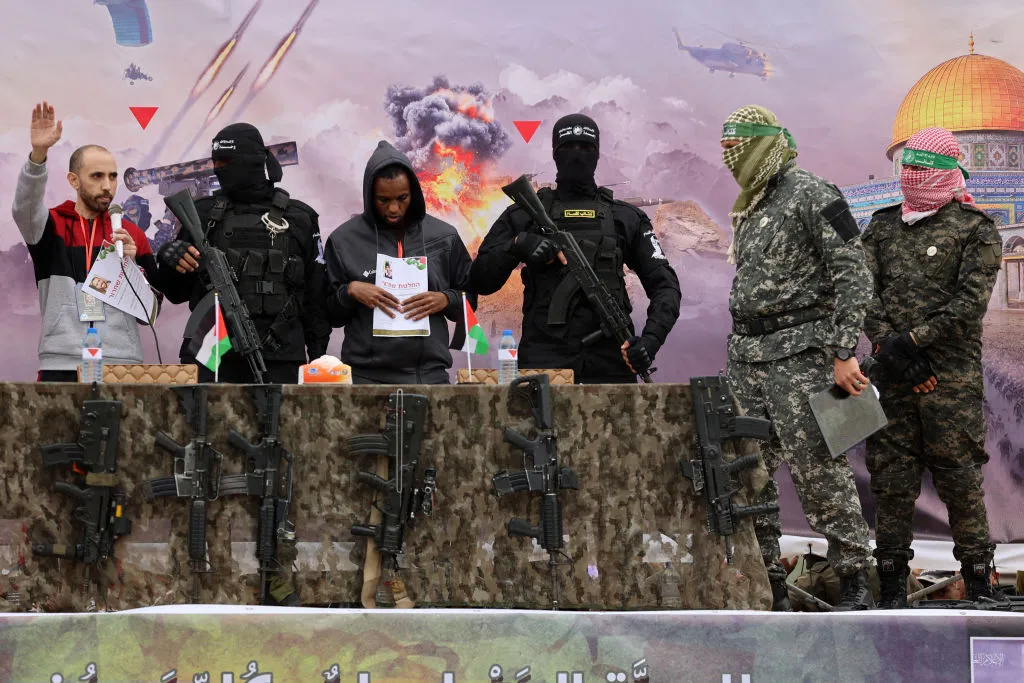‘Body Mix-Up Sparks Outrage’: Israel Accuses Hamas of Returning Wrong Hostage Remains Amid Fragile Ceasefire
The fragile Gaza ceasefire was thrown into turmoil on Wednesday after the Israeli military revealed that one of the bodies returned by Hamas was not that of a hostage, deepening mistrust and reigniting tensions over the two-year war that has already devastated both sides.
Officials said the discovery came after forensic teams at Israel’s National Institute of Forensic Medicine completed DNA and dental analysis, determining that one of the four bodies transferred Tuesday under the U.S.-brokered ceasefire deal did not match any of the Israeli hostages held in Gaza.
The revelation has sparked public outrage, renewed grief among hostage families, and fears that the Israel-Hamas truce could unravel once again.
Why Did Hamas Return the Wrong Body?
The Israeli army confirmed that the body “does not correspond to any known hostage.” So how could such an error happen?
In simple terms, identifying remains in Gaza is extremely difficult. Months of airstrikes, collapsed buildings, and unmarked graves have made recovery efforts chaotic. Both Hamas and the Red Cross say many hostages’ remains lie buried beneath rubble or in combat zones still controlled by Israeli troops, making proper identification a slow, often dangerous process.
Still, this is not the first time the militant group has made such an error. During a previous truce earlier this year, Hamas returned what it claimed were the bodies of Shiri Bibas and her two sons, only for testing to reveal that one was a Palestinian woman.
Netanyahu’s Fury: “We Will Not Compromise”
Prime Minister Benjamin Netanyahu demanded an explanation from Hamas and insisted that all living and deceased hostages must be returned under the ceasefire terms introduced by U.S. President Donald Trump.
“We will not compromise on this and will not stop our efforts until we bring home every last hostage,” Netanyahu vowed.
Israel says it is still waiting for 28 bodies to be returned. So far, Hamas has handed over eight — four on Monday and four on Tuesday — alongside the release of the last 20 living hostages.
Families Caught Between Hope and Heartbreak
In Tel Aviv’s Hostages Square, where nightly vigils have continued for months, news of the mix-up hit like a wave.
“I thought this nightmare was finally ending,” said Yael Nimrodi, cousin of one of the confirmed victims, Tamir Nimrodi. “Now it feels like we’re back at the beginning.”
Psychologists working with the Hostages Family Forum say these repeated reversals have created a kind of “suspended grief,” a trauma cycle where families swing between hope and despair. The Forum has urged both Hamas and Israeli authorities to share full forensic data transparently to avoid further emotional harm.
A Ceasefire Under Strain
The U.S.-backed ceasefire required Hamas to return all hostages — living and dead — by Monday. If unable, it was to share verified information about those still missing.
Israel has also released around 2,000 Palestinian prisoners and detainees and begun transferring unidentified bodies via the Red Cross. Forensic teams in Gaza are now examining 45 bodies returned by Israel on Tuesday.
Hamas spokesman Hazem Kassem claimed the group “is fulfilling its side of the deal,” accusing Israel of ceasefire violations after shootings in Rafah and eastern Gaza City. Defense Minister Israel Katz countered that Israel’s army “is operating strictly along the designated lines” and warned that any militant crossing those lines “will be targeted.”
Emotional Homecomings and Public Mourning
On Wednesday, the remains of Uriel Baruch, Tamir Nimrodi, and Eitan Levi — three of the confirmed hostages — were laid to rest. Crowds lined the roads north of Tel Aviv to salute the convoys, a rare moment of unity amid chaos.
-
Baruch was abducted from the Nova music festival on October 7, 2023, when Hamas launched its deadly assault that ignited the war.
-
Nimrodi worked with COGAT, Israel’s humanitarian coordination office in Gaza.
-
Levi was kidnapped while driving a friend to Kibbutz Be’eri.
Their funerals were broadcast live across Israel — part memorial, part warning that peace remains tenuous.
Aid Deliveries Resume After Two-Day Pause
Humanitarian deliveries to Gaza restarted Wednesday after a 48-hour freeze linked to the prisoner exchanges and the Jewish holiday Simchat Torah.
The Egyptian Red Crescent confirmed that 400 trucks carrying food, fuel, and medicine crossed from Rafah into the Israeli inspection zone at Kerem Shalom before being allowed into Gaza.
However, Israel’s defense agency COGAT has limited entry to half the 600 trucks per day agreed under the ceasefire, citing ongoing security risks.
Analysis: A Fragile Calm in Name Only
For now, both sides insist the ceasefire still stands. But the return of the wrong body has reignited public skepticism about Hamas’s motives and Israel’s handling of the recovery effort.
The truce that was meant to bring closure has instead delivered another wave of uncertainty — a reminder that even peace, in this conflict, comes at a human cost measured in grief and doubt.













